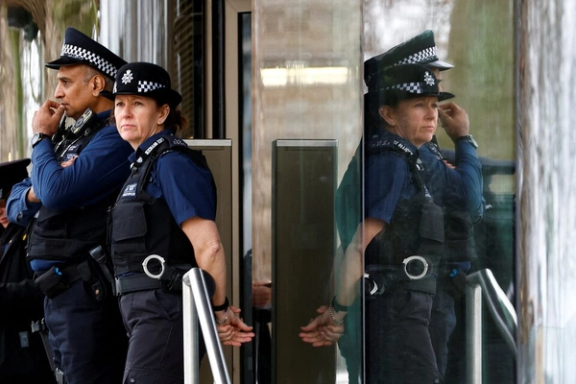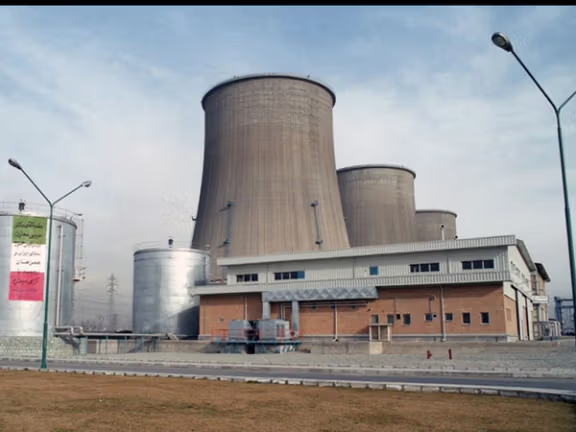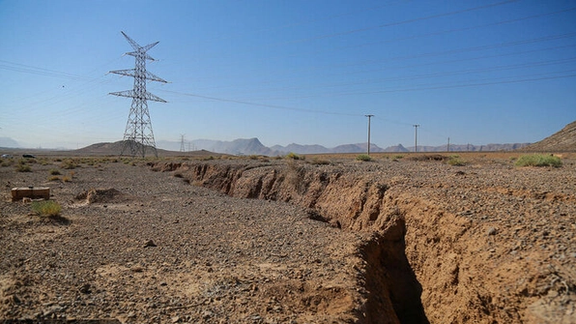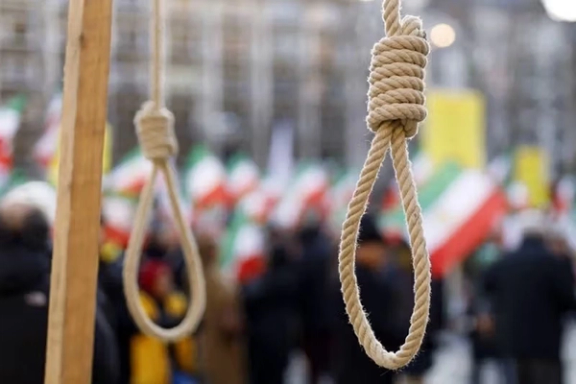Police fatally shot 19-year-old in northern Iran, rights group says

A 19-year-old man was killed after being shot twice in the head by police during a confrontation at a beach in northern Iran, the Norway-based Hengaw rights group reported.

A 19-year-old man was killed after being shot twice in the head by police during a confrontation at a beach in northern Iran, the Norway-based Hengaw rights group reported.
Sahel Nasiri and his friend Benyamin Gholami were approached by police for a body search and an attempt to confiscate their motorcycle on Friday evening at Zibakenar Beach in Iran’s Gilan province, Hengaw’s report said, according to local sources.
When Nasiri resisted and tried to mount the vehicle, officers shot him twice in the head at close range, killing him.
Nasiri’s body was transferred to the local police station that night, and his friend Gholami was taken into custody, the report said.
Gilan province police said Nasiri and another motorcyclist had been carrying crystal meth, marijuana, and hashish. They said he tried to disarm officers and was “neutralized” after a warning shot failed to stop him.
Nasiri’s death triggered protests by residents of Zibakenar, who set fire to banners on the local police station, according to Hengaw.
The rights group said the demonstrations ended after security forces stormed the area and clashed with protesters.
Nasiri’s body was handed over to his family following hours of protests and threats from authorities and was buried in his hometown on Saturday, the group added.

British counter-terrorism police have arrested seven Iranian nationals in two separate investigations, one of which involved an alleged plot to carry out a terrorist act targeting a specific location in England.
The first operation on Saturday led to the arrest of five men—aged between 29 and 46— in coordinated raids across Swindon, west London, Stockport, Rochdale, and Manchester, according to the Metropolitan Police.
Four of the men were identified as Iranian nationals and detained under the Terrorism Act of 2006. A fifth man, whose nationality was not disclosed, was arrested under the Police and Criminal Evidence Act. All remain in custody as searches continue at multiple addresses across England.
“We are working closely with those at the affected site to keep them updated. We are exploring various lines of enquiry to establish any potential motivation as well as to identify whether there may be any further risk to the public,” said Commander Dominic Murphy, head of the Met’s Counter Terrorism Command.
Officials have not disclosed the nature of the suspected target or whether any weapons or materials were seized, citing operational sensitivity.
In a separate investigation, police arrested three more Iranian nationals in London on the same day as part of a counter terror investigation. The men were detained under Section 27 of the National Security Act 2023, which authorizes arrests based on suspected “foreign power threat activity.”
The two operations were not connected to each other, police said.
The arrests come as UK intelligence services warn of sustained threats linked to Iran.
In October, MI5 Director General Ken McCallum said authorities had disrupted 20 “potentially deadly” plots tied to Tehran since January 2022.
“Iranian state actors make extensive use of criminals as proxies—from international drug traffickers to low-level crooks,” McCallum said in a public statement.

A series of incidents unfolded in Alborz Province, west of Tehran, on Saturday evening, including two fires, reports of an explosion, and a magnitude 4.0 earthquake, according to official statements and eyewitness accounts.
One major blaze broke out at a cardboard manufacturing factory in the city of Nazarabad.
Stormy weather in the area caused the fire to spread to 12 nearby units, a local governor said, adding that efforts are underway to bring the blaze under control.
The cause of the fire is not yet known, and there have been no reports of casualties.
Around the same time, another fire was reported near the Montazer Ghaem power plant in the city of Fardis.
The state-run YJC news agency initially released a video that purportedly showed no fire at the facility.
However, Iranian officials later confirmed the report. Hossein Ashouri, head of the Fardis fire department, said the fire began around 8:41 p.m. in a portable cabin next to a waste platform near the power station.
Strong winds caused the flames to spread over approximately 2,000 square meters. Nine additional fire trucks were deployed, and the blaze was brought under control.
Preliminary findings suggest the fire was caused by negligence on the part of the person stationed in the cabin.
Reports of explosion
Iranian officials have denied any link between the fire and the power plant's operation. However, widespread power outages were reported in several areas of the province.
Residents across Alborz Province told Iran International they heard an explosion shortly before 9 p.m., moments before experiencing an earthquake.
Iran’s Seismological Center confirmed that the 4.0-magnitude quake struck at a depth of 8 kilometers near Mahdasht, on the border of Alborz and Tehran provinces.

Iran’s escalating water crisis is not only draining its aquifers but also laying the groundwork for potentially devastating earthquakes, a leading geology expert warns.
Mehdi Zare says human responses to prolonged drought—particularly rampant groundwater extraction—are altering underground stresses and could trigger seismic activity in cities like Tehran, Isfahan, and Mashhad.
“Droughts can indirectly influence seismicity through human activities, particularly over-extraction of groundwater, which alters subsurface conditions,” Zare wrote on Rokna news Saturday.
These shifts may activate critically stressed faults, he added, especially in tectonically sensitive regions.
As aquifers are depleted, the earth’s crust begins to rebound, redistributing pressure and modifying fault dynamics. This process, compounded by reductions in pore pressure, brings fault lines closer to rupture.
In some areas of Tehran, groundwater levels are falling by up to two meters a year. Land subsidence has reached 31 centimeters annually in parts of southwest Tehran, according to government data released in March.
The 2017 Malard earthquake near Tehran, which measured magnitude 5.0, occurred near one such subsiding zone. Zare notes that similar patterns have been observed in California, India, and Spain, where changes in groundwater levels preceded swarms of small but revealing earthquakes.
Ali Beitollahi, head of earthquake engineering at Iran’s Ministry of Housing research center, warned of a destructive cycle. “Population grows, water becomes scarce, more dams and wells are built—and so we drill again,” he said.
He criticized the government’s approach, which focuses on securing more water rather than managing demand. “We are now hearing plans to drill deep wells in Tehran this summer,” Beitollahi said. “Our mismanagement is taking us to a dangerous place.”
Iran’s water reserves have fallen to critical levels, accelerating the risk of shortages and forcing officials to consider rationing months before peak summer demand.
Tehran's water supply is critically strained as key dams plummet to record lows, worsening a nationwide drought. Latian and Mamlou dams are at 12% capacity, Lar at 1%, and Karaj at 7%.
Nationwide rainfall is 82.9% of normal, and dam inflow is only 42%. Officials urge a 20% reduction in water use, as 19 provinces face water stress.
With 40 percent of Tehran’s aquifer already depleted and critical urban centers still expanding, experts say the time to act is rapidly closing. Without structural water governance reform and population redistribution, Iran risks turning drought into disaster—both above ground and below.

Iran’s currency fell sharply on Saturday after a planned fourth round of indirect talks with the United States was postponed, as sharp disagreements over uranium enrichment and inspections cast doubt on prospects for a breakthrough.
The rial dropped past 870,000 to the US dollar in Tehran’s open market, reversing gains made earlier last month during previous rounds of diplomacy in Oman. The currency had recovered to around 795,000 following the third round but slid again amid rising uncertainty.
US Secretary of State Marco Rubio said Thursday that Iran must end all uranium enrichment and open all nuclear facilities, including military sites, to American inspectors if it wants to avoid “serious consequences, including potential military action.”
“There’s no reason for enrichment unless you want a weapon,” Rubio told Fox News, adding that Iran must also abandon support for proxy groups and halt long-range missile development.
Iranian Foreign Minister Abbas Araghchi on Friday dismissed Rubio’s demands, warning that such “maximalist positioning and incendiary rhetoric achieve nothing except eroding the chances of success.” He said Iran has “every right to possess the full nuclear fuel cycle as a founding signatory to the NPT.”
“A credible and durable agreement is within reach,” Araghchi said. “All it takes is firm political will and a fair attitude.”
The International Atomic Energy Agency (IAEA) has confirmed Iran is the only non-nuclear-armed country enriching uranium to 60%.
No official reason has been given for the postponement of this weekend’s round. Iranian officials have acknowledged lingering disagreements over both general principles and technical details.
The rial had plunged to a record low of around 1,058,000 per dollar in early April before stabilizing during earlier rounds of talks.

Over 300 global figures—including UN experts, Nobel laureates, former ambassadors, judges, and human rights leaders—have issued an urgent appeal for United Nations intervention to stop what they call a “campaign of politically motivated executions” in Iran.
The joint statement, signed by a wide range of international voices, condemned Tehran’s judicial handling of political prisoners and called on democratic governments and UN bodies to act swiftly.
The appeal centers on the cases of Behrouz Ehsani, 69, and Mehdi Hassani, 48, whose death sentences were recently upheld by Iran’s Supreme Court.
The statement described their prosecution as a sham: “Their kangaroo trial on 10 August 2024, lasting just five minutes, was a travesty of justice: they were denied legal counsel for nearly two years, tortured, and silenced during proceedings.”
The charges include “membership in the exiled opposition group Mujahedin-e Khalq Organization” and “propaganda,” framed as “enmity against God” and “corruption on earth” under Iran’s legal code.
“We demand an immediate halt to their execution,” the signatories wrote. “The international community must not remain silent.”
The group also warned of a broader execution drive under President Masoud Pezeshkian, who took office in August 2024. Since then, more than 1,000 executions have been carried out, disproportionately targeting women, juveniles, ethnic and religious minorities, and political dissenters. Several prisoners, including Abolhassan Montazer and Sharifeh Mohammadi, have already been moved to Ghezel Hesar Prison—described in the statement as “a notorious execution site.”
The appeal highlights findings by former UN Special Rapporteur Javaid Rehman, whose July 2024 report concluded that mass killings in Iran in 1981–82 and 1988 amounted to crimes against humanity and genocide. “The Iranian authorities’ systematic targeting of political prisoners is rooted in a culture of impunity,” the joint statement said.
They called on the UN and democratic governments to “identify and sanction Iranian officials responsible for human rights violations” and to tie future relations with Iran to the release of political prisoners and abolition of the death penalty.
Iran accounted for 64% of all known global executions in 2024, with at least 972 people executed, according to Amnesty International.